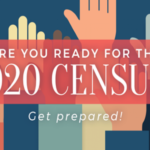Civic Technology – A Community Asset to Build Upon
You can read/download the research done by MySociety referenced in this blog post here.
On Tuesday, The Chicago Community Trust held its annual On the Table event, which shines a spotlight on issues of community interest and provides a platform for collaborative analysis. The conversation was led by community organizations around Chicago including the YMCA, the Chicago Public Library and many others. Over the course of the day, thousands of civic-minded problem solvers met to discuss unique problems our society faces, and how to address them through civic action.
Civic Technology as a Community Asset
We attended Microsoft‘s On the Table discussion about the challenges our society faces as technology is further integrated into civic life. Building on the belief that better tools make better policy, civic technology seeks to engage citizens more closely in the process of governmental decision-making. As ILCC and our member campuses continue to strive for greater asset-based decision-making in campus and civic life, the integration of technology into civic life is vital to our mission.
The discussion surveyed the rapidly evolving field of civic technology and engagement, and it posed the difficult question of how best to build a sustainable two-way digital communication structure between a government organization and the people. The takeaways from this discussion can be used to understand how higher education can teach students to seek out meaningful civic engagement through technology.

Emily Shaw, Senior Implementation Advisor at the Center for Government Excellence at Johns Hopkins University, began the discussion with a short presentation on the research she conducted in collaboration with mySociety. Shaw’s research looked at five standalone civic technology projects in Austin, Chicago, Oakland, Seattle and Washington D.C. to analyze the effect each had on the government’s ability to communicate and collaborate with the public.
These projects identified issues of community interest in each community and sought to solve them through communication technology. For our purposes, it’s not entirely necessary to delve deep into the specifics of each project, but each one is incredibly interesting and worth looking into. Learn more about the projects here.
One of the primary takeaways of Shaw’s research was that civic technology is transforming the way citizens interact with the government without changing how the government interacts with the people. That is to say, citizens are easily able to find and request information from the government on sleek web-based platforms, but the capacity for the government to respond to those requests in any meaningful way has not yet been developed.
This finding challenges two old beliefs about technology: that it would inherently increase engagement and that it would save governments and organizations a lot of money. Unfortunately, neither of these notions have proven quite so simple. Shaw believed the problem to be a lack of understanding about what a digital two-way communication structure requires.
“It’s not that people don’t contribute ideas through these platforms,” she said, “It’s just nobody’s job to look through them yet.”
Shaw’s research showed that government organizations that took the time to build these platforms tended to believe that they are the solution to a problem and not the vehicle by which to find solutions. Once a civic technology platform is built, Shaw reported, it is often left under-resourced, leaving the inner workings of the government slightly prettier but essentially unchanged.
“Technology is a tool, and without help from us it will simply reinforce existing power structures.” – Demond Drummer, Founder of CoderSpace
Under-resourced government programs is nothing new. It’s an age old problem. However, higher education is uniquely positioned to foster a culture of engagement through civic technology.
Higher Education’s Tech Edge
Campuses around Illinois and the country are already heavily integrated with technology. Students and faculty interact every day in virtual classrooms. Separate university facilities and centers successfully project their unique messaging to the student body to bolster engagement with the institution’s diverse programming. These successes make the institution stronger together, and make higher education’s approach to responsive two-way technology something for government programs to emulate.
What higher education can do to further this success and project it out into civic life is to continue to create a more open two-way digital communication structure that encourages collaboration between students, staff and faculty. Take every opportunity to connect campus programs to one another through technology. Share information between classes, schools and offices on an accessible digital platform that encourages student and community input. Take time to learn where and how your students converse through technology and engage them there. Let your student-body know what a high-function civic technology infrastructure looks like so that they can go out and demand it from their government.
As evidenced by Shaw’s research, it’s not the lack of talent or ingenuity holding back civic technology. It’s a combination of under-funding and lack of public enthusiasm. Higher education can do much to sway both of those inhibitors.
By immersing new generations of tech-savvy students in a culture of civic engagement through technology, campus communities can show students how technology is an asset to any community. Our campuses can teach students to seize upon technology as a strength to build upon.
And it’s important to build upon our understanding as Demond Drummer, founder of CoderSpace, pointed out at the On the Table discussion.
“It’s important for people to remember that technology itself won’t solve all our problems,” Drummer said. “Technology is a tool, and without help from us it will simply reinforce existing power structures.”
Drummer’s point shows why it is essential for our institutions of higher education to demand more from technology. We cannot continue to let technology be left untapped as a resource for community empowerment. Civic technology cannot be seen as unresponsive, because it can breed frustration and helplessness among community members. Civic tech should allow communities to come together, identify their strengths and build upon them. That process begins with our campuses.
You can read/download the research referenced in this blog post here.
- Blog , Blog Posts , News
 News
News 


